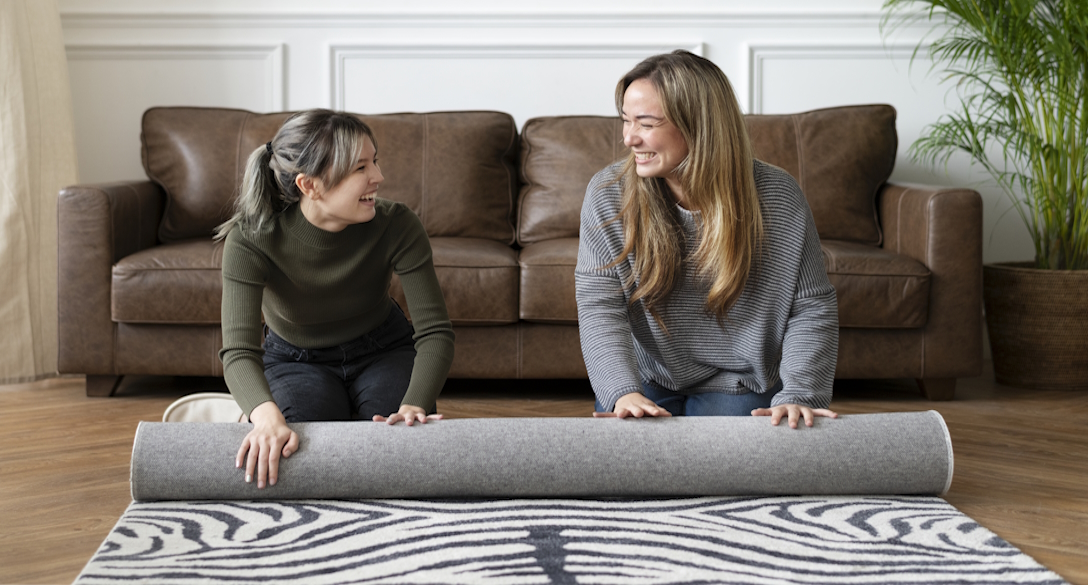Carpeting with Insights: What Makes a Rug Truly Functional and Professionally Chosen for Your Space

When you are rug shopping, it's easy to get lost in price or what you see without attaching value or aligning with your needs, and that's precisely how a frustrating purchase starts. Poor choices can result in a piece that quickly loses its charm. Thus, focusing on critical rug elements that build into intentional results is crucial.
1. Design & Color: Visual Utility as Much as Beauty
Design elements are critical decorative additions. But when you infuse professional practice, you bring in a diverse understanding of how every detail contributes to the whole. For example, you can leverage options from a wide range of black and white rugs to sculpt environments, clarify spatial boundaries, and support emotional atmosphere. Good design is functional design.
- Strong patterns and saturated colors- for boldness, concealing high-use wear or serving as brand-aligned focal points.
Neutral rugs with subtle patterns to enhance cohesion to multi-textured or eclectic interiors in offices, rentals, or staging environments where versatility is key. - Light tones visually open tight floorplans—a trick used in small urban condos or studio design schemes.
- Dark or rich colors ground large open-concept homes or anchor furniture groupings in luxury retail lounges.
- Pattern scale is a professional’s secret: tight patterns can mask stains and visually expand space; oversized motifs command attention in sparse rooms.
Beyond being decorative tools, rugs solve visual and spatial challenges. A rug’s design can transform mood, define zones, and dictate flow. That’s strategy, not just styling.
2 .Material That Meets the Purpose: The Foundation of Functionality
Rugs are available in a wide range of fibres and yarns for foundation surface, pile, and secondary backing, and knowing how each blends into your needs is vital. While you may not have the expertise to analyze fiber composition in depth, a professional store attendant can help translate the complexity into aligned recommendations.
They help you interpret how that fiber performs in real-world scenarios.
- Will it handle high foot traffic without losing texture?
- Does it resist stains or absorb them?
- Is it suitable for allergy-sensitive environments?
Your material choice will either support your space—or work against it.
That's why understanding the functional value of rug materials is key to making a confident and informed selection.
- Wool: A wise old friend of the rug world – naturally springy, incredibly comfortable, and surprisingly resilient with natural insulation.
- Nylon and Polypropylene Synthetics: Ideal for spaces that require easy cleanup and affordability
- Cotton: Soft, inviting, and wonderfully washable, fantastic for creating that intimate, relaxed vibe in a family home or for clients who absolutely prioritize that lovely, soft touch underfoot.
- Naturals (Jute, Seagrass, Sisal): These bring that beautiful, earthy texture that screams organic chic. But here's a pro tip: while gorgeous, they're not for every nook and cranny. Steer clear of damp climates or spill-prone zones like kitchens – they're high-maintenance in those environments!
You get it right, and you've found a steadfast companion that elevates your space tenfold.
3. Pile Height & Construction: Your Cushion, Your Canvas, Your Care Guide
Pile isn't just about comfort—it’s about aligning form with floor function. As professionals, we’re not recommending a plush shag just because it feels good. We’re thinking ahead: Will this be under furniture? Will it face constant foot traffic? Is this for showroom display or a child’s playroom?
- Low pile/flatweaves are the behind-the-scenes heroes for commercial entries, under-dining areas, or minimalist spaces. They resist crushing, clean easily, and let furniture move smoothly.
- Medium pile is where we see the most adaptability—balanced enough for living areas, yet still forgiving in care. Often the best choice for households that want one rug to do it all.
- High pile or shag has a place—bedrooms, nurseries, and lounge zones—but needs pairing with a maintenance strategy. For clients expecting low upkeep, this may not be ideal.
- Cut vs. loop vs. combination piles go beyond aesthetics. Cut-and-loop can hide footprints and stains—great for display floors or frequently used family rooms.
Construction is where professional selection replaces guesswork. It’s not just about what feels good—it’s about what works long-term, based on use cases, not just style boards.
4. Functional Roles: Beyond Decor—A Rug as a Quiet Problem Solver
Rugs solve a lot of hidden problems when chosen well. Their usefulness often unfolds in the details that a trained eye knows to look for.
- Sound control in echo-prone rooms? A dense wool or high-pile construction helps. That’s why you’ll often find them in meeting rooms or upper-floor condos.
- Zoning in open-plan layouts? Rugs clarify purpose—without putting up walls. This is a subtle design trick used in corporate lounges, gallery spaces, or large residential interiors.
- Hiding dirt or wear? For families, rental properties, or busy lobbies, textured or multi-tonal rugs not for style alone, but for camouflage.
- Safety & softness for kids or seniors? We look for low-profile, non-slip-backed options that minimize tripping risk while offering cushion. Cotton or soft synthetics are excellent here.
Functionality isn't about checking features—it’s about identifying the space’s stress points and using rugs to ease them. The right choice protects, enhances, and simplifies.
In conclusion, rugs fashion and functionality is a critical factor in enhancing your space. However, it requires informed insights. With a reliable rugs collection store and professional assistance, the right rug becomes a tailored solution, not just a surface. That helps blend lifestyle, needs, preferences through the lens of purpose. It’s not about decorating—it’s about outfitting with expertise.


